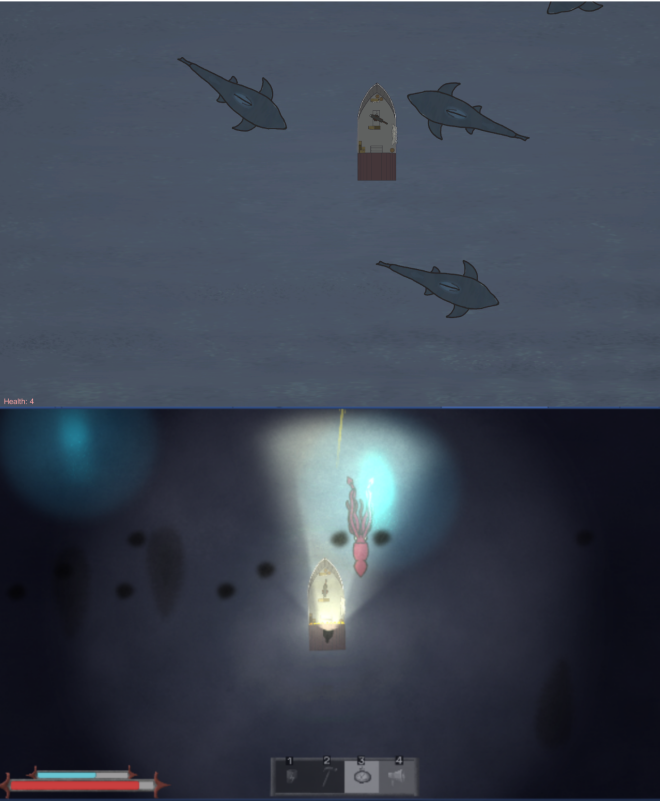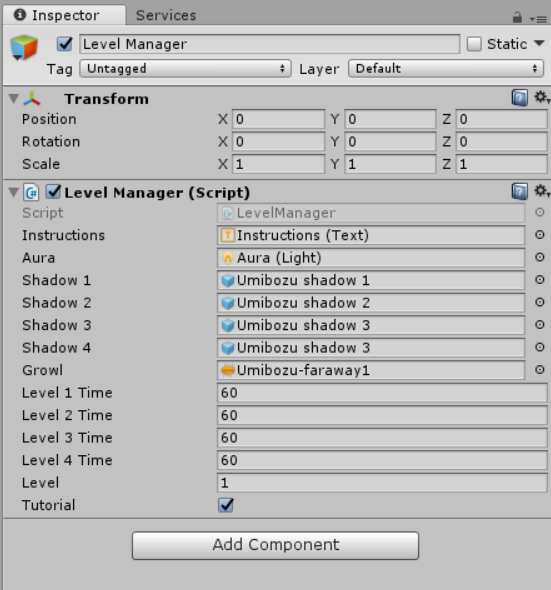Ignore for a moment, if you will, the title that will probably be outdated by the time you read this, and listen to my small ditty about the playtests, the steps taken in both of them and the differences between the two.
For our alpha playtest, our build was rather minimal, we had 1 type of enemy, one type of power-up (which was later scrapped entirely) and randomly generated levels. It was also before we introduced the mechanics of the fog and darkness, the title-screen, completely reworked the way the projectile is fired, and that’s before even mentioning all the art assets we didn’t have. All things considered, our alpha was fairly bare-bones. We did make one really good decision in our playtests, we set up shop on the stage in class, which we would discover boosted the number of playtesters. Below you can see the stark contrast between the two versions. We took our feedback in the form of recorded interviews, which allowed for a greater range of responses but was a figuritive bitch to transcript, so we decided that the beta playtest would have a standard survey.
We tried to fix things that were commented on during the alpha, such as the behavior of the pickups and how the projectiles were fired. We recieved praise for our use of sound effects and how well they were integrated into the flow of the game, so we continued working with those as we did before.

Before the beta playtests, there was a lot left to correct and fix, the most challenging was the level manager which, as noted in my previous post, took me a weekend to create just before the playtests, after which I negotiated a day-off with my teammates. This time we had four different power-ups, a menu to control them, a health-bar, a battery bar, new enemies and new obstacles and a metaphorical shit-ton of new features and mechanics. We once again chose the stage for our station, and we are very proud of the fact that we got 49 feedbacks and also very bummed because we didn’t get 50. One of the artists, in particular, had a hard time swallowing it, such an almost-perfect number. A new feature which I was particularly proud of was the spooky scenes between the levels, a piece of information I did not hide from our playtesters at all. Oh, how I watched them play, just waiting for the first level to rap-up so I could see how they react. I took immense pleasure in it. The responses were mostly positive, most criticisms said that the squids were overpowered, so they were quickly nerfed.
In conclusion, we tried to learn as much from our initial mistakes in both our game and the playtests themselves in order to maximize our game’s enjoyability as well as our efficiency in gathering information and making people aware of our game.
-Guy “did he really just say that?” Dimor




 helps us improve our group dynamic. While we work, we also crack jokes, bring snacks and have fun. We even have our own custom emoji and Pepe on Slack. All of these combined with a workflow that’s busy but not overbearing resulted in a very good work environment.
helps us improve our group dynamic. While we work, we also crack jokes, bring snacks and have fun. We even have our own custom emoji and Pepe on Slack. All of these combined with a workflow that’s busy but not overbearing resulted in a very good work environment.